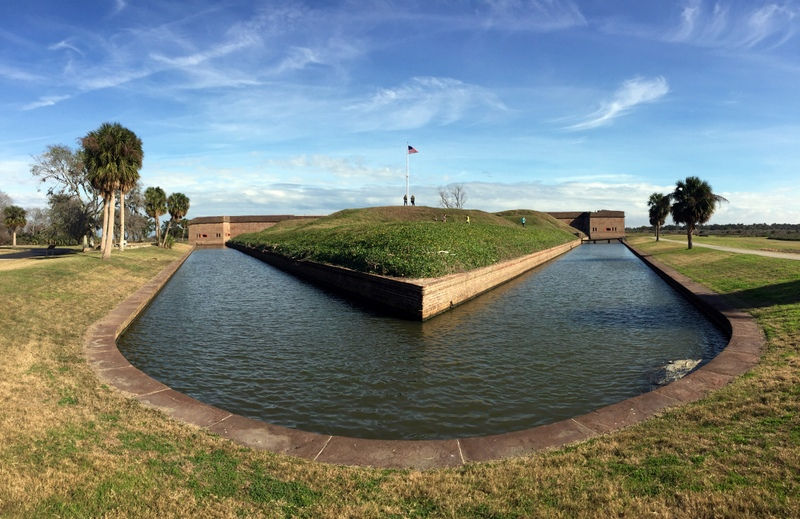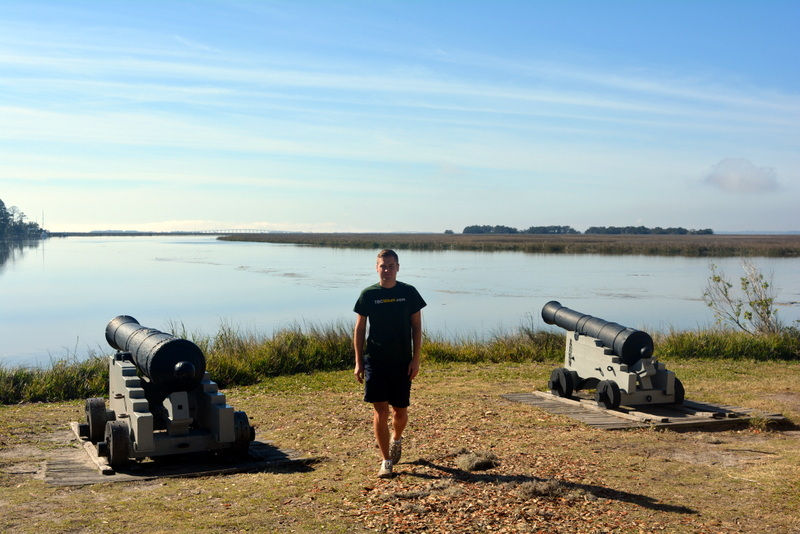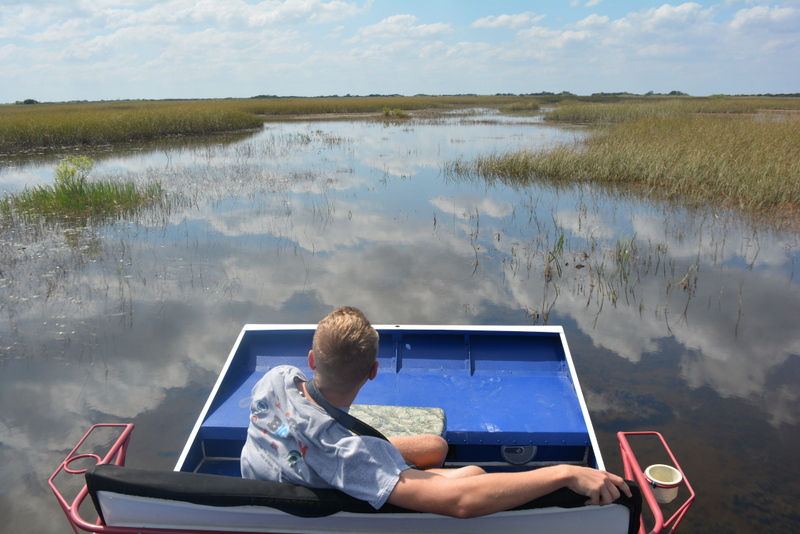Top 5 Highlights of Southeast National Parks
- Mikah Meyer
- Feb 12, 2017
- 8 min read
#101 - Fort Sumter National Monument #102 - Charles Pinckney National Historic Site #103 - Reconstruction Era National Monument *just named on January 12th, 2017* #104 - Fort Pulaski National Monument #105 - Fort Frederica National Monument #106 - Cumberland Island National Seashore #107 - Fort Caroline National Memorial #108 - Timucuan Ecological & Historic Preserve #109 - Castillo de San Marcos National Monument #110 - Fort Matanzas National Monument #111 - Canaveral National Seashore #112 - Dry Tortugas National Park #113 - Everglades National Park #114 - Biscayne National Park #115 - Big Cypress National Preserve
Summary video
Today marks exactly one month since I left my “Administrative Segment” in Washington D.C. and embarked on the Southeast Leg of my nonstop journey to all 417 U.S. national parks.
If you’re wondering why that number has gone up from 413 since my last blog, that’s because on the same day I departed D.C., President Obama announced 4 new National Park Service sites. While driving south on I-95, my phone began blowing up with text messages and Facebook comments about the new sites. To my surprise, one of them was in Beaufort, South Carolina, just an hour south of Charleston, SC, where I was headed for park #101—my first site in 2017.
The announcement was a complete surprise and in addition to providing me a visit to a new NPS site, Reconstruction Era National Monument, less than 48 hours after it was announced, it also added the first park on my journey that will require me to backtrack and mess up my gas conserving, optimal route.
My current route with a star in Auburn, New York, where the new Harriet Tubman National Historical Park will require my first backtrack - Donate Here to help me get there!
This was not my only surprise though. As I wrote about in my final blog of 2016, being back in Washington D.C. (my home of 4 years before this project) overwhelmed me with a number of bittersweet feelings about this continuous road life I’ve given myself.
However, despite those reservations, I’ve made it back on the road and to 15 National Park Service sites in the first month. Below are the Top 5 Highlights from my First 15 National Parks of 2017
1. Forts, Forts, and More Forts
If you are a fan of historic forts, coastal South Carolina, Georgia and Florida may just be your Shangri-La. From the fort that endured the first shot of the Civil War (Fort Sumter) to one that was made of oyster shells (Fort Frederica), this stretch of low-country provides ample opportunities to walk inside and around a plethora of historic U.S. forts. Each of them has their own history and design--which the NPS staff do a wonderful job of synthesizing via their tours and visitor centers--and each tells a distinct story from U.S. history. Some of the forts changed hands during the Civil War (Fort Pulaski) while others were critical to America eventually gaining its independence (Fort Caroline, Castillo de San Marcos National Monument, Fort Matanzas National Monument).
All together they make up, as I say in the above Voice of America summary video, sites that are about “either America becoming America, or America figuring out who America is.”
To see all my top photos from these sites, Like my Facebook page or Follow my Instragram
Fort Sumter - Watch my Facebook Live video from the island fortress that suffered the first shot and casualty of the American Civil War
Ruins of British-created Fort Frederica
With oyster-shell fortified walls!
A replica of the French-controlled Fort Caroline
The Spanish-created Castillo de San Marcos in heavily touristy Saint Augustine, Florida
The boat that normally takes visitors to Fort Matanzas was closed due to damage from a recent hurricane
The unique moat--the first I've seen on any NPS fort--surrounding Fort Pulaski
Walking across the moat into Fort Pulaski
WATCH Savannah News – WTOC coverage of my visit to Fort Pulaski
2. One Nation, Many Flags
Whether it was the British, French, Spanish, or even Native Americans, the coastal sites of the low-country show that there were intense battles, both physical and diplomatic, for the control of what we now call The United States. Sites like the Timucuan Ecological & Historic Preserve display how these played out on a largescale level, such as the Timucuan Natives who made their home in the marshes outside present-day Jacksonville and thrived on the huge oyster populations, and on smaller anecdotal levels like the owner of Kingsley Plantation who switched allegiance to whatever country controlled his land, and even married an African-American enslaved woman who—because she was made a Spanish citizen under their rule—became the first black person to successfully sue the U.S. government.
With the juxtaposing cultures of wealthy, white, slave-owning founding fathers and enslaved individuals who formed the Gullah people (a well-preserved group of former slaves who created their own pseudo-English language), NPS units like the Charles Pinckney National Historic Site add to this history of America's creation through many nations who eventually came together under the U.S. flag.

3. Interesting Animals!
Have you ever wondered what it’d be like to stumble on wild horses?
Because that’s exactly what happened to Andy and I at Cumberland Island National Seashore. WATCH the Facebook Live video of the moment here
By either misfortune or fortune, it turned out the day I planned to be at Cumberland Island National Seashore there were no public boats. However, since I’m an official “Volunteer in Parks” for the National Park Service, Andy and I were able to take a maintenance boat over to the Island. This meant that we had the National Seashore essentially to ourselves!
Only minutes after stepping off the boat, we embarked down a seaside path toward the island’s historic ruins and ran into four wild horses blocking the trail.
This would be the first moment of a day filled by random encounters with wild horses and oblivious armadillos. It was a good set up for our visit to Everglades National Park, for there, we not only had the opportunity to comingle with a bunch of swamp animals by taking part in a Slough-Slog (a highly recommended activity where you walk through mud and swamp—it’s way more fun than it sounds), but on the Anhinga Trail we also got up close and personal with more gators than I’d seen in my life. This was easily the best place in the eastern part of Everglades NP to see gators, and also provided hours worth of bird, fish, and turtle watching!
Cumberland Island
Slough-Slog - Everglades National Park

*Make sure you reserve a Slough-Slog with Ranger Lori Mobbs (seasonal during winter). She was one of the best tour guides I've had this entire trip so far! (Picture below)
Anhinga Trail - Everglades National Park
*Update* 3.5 - Everglades/Big Cypress Activities
When I published this piece, I thought I'd experienced all the above two parks had to offer, but then I unexpectedly got an extra two days in the park and realized how wrong I was. Through Everglades Nature Tours I spent the day with Ozzie--an area native of over 50 years--and took a Swamp Buggy tour of the magically misty Florida National Scenic Trail in Big Cypress. Afterwards, I did an airboat ride just north of Everglades' Shark Valley where Ozzie took Andy and I to baby gators, the mama gator who huffed an puffed to protect them, and a male gator who Ozzie could call over to his boat by name!
Late that same day, from Everglades' Gulf Coast Visitor Center I was able to take the Everglades National Park Boat Tours "10,000 Islands" sunset tour through the brackish waters where freshwater and ocean meet. There I saw a number of dolphins who liked to jump in the waves behind the boat or appear along the sunset.
While the boat tour is recommended if you have extra time, the Swamp Buggy and Airboat ride were clear highlights of my time in Florida and must do's if visiting either site! The Shark Valley Tram Tour was also a pleasant surprise, as it comfortably and educationally cruises you past nearly every animal that exists in Everglades National Park.
1 Minute Airboat Ride
Airboat Highlights
Swamp Buggy
Gulf Coast Boat Tour - Dolphins Appear
Shark Valley Tram
Watch the Voice Of America summary of my time in the Everglades
4. The Many Parts of Florida
Growing up, my family of six basically had one vacation destination: Florida.
But it wasn’t all parts of Florida, and it wasn’t even the glamorous parts (Disney, the beach). It was a small suburb of a suburb in one of Florida’s smallest cities. The reason? My dad’s dream was to build—together as a family—a house he could live in once he retired.
So nearly every summer or break my father had from being a campus pastor, our family of six would cram into an old van and my dad would drive 24+ hours (all by himself) from Nebraska. For all those tween/teenage years, I desperately wanted to visit the other parts of Florida I’d spend those 24+ hours staring at on our Rand McNally atlas. Now as an adult, on this project, I finally got to see those other parts!

What I learned on my drive down the entire Florida Atlantic Coast is that there are many different parts to it.
Up north, in Jacksonville, you have swamp/marsh land that leads to enormous beaches of hard sand that vehicles can drive on.
In the central coast you have the over commercialized and Spring Break famous beaches like Daytona Beach that epitomize the development which has overtaken the coast. But then you also have the largest stretch of undeveloped Florida Atlantic Coast beach at Canaveral National Seashore (a haven for fisherman).
By the time you reach South Florida, it’s a whole new ball game. With nearly 50% of Florida’s 20 million residents living in the Palm Beach-Fort Lauderdale-Miami area, those swamps, marshes and beaches basically become one giant traffic jam.
Fortunately, just south of that urbanity, the pristine beauty of Florida’s natural habitat can still be experienced. Parks like Everglades National Park, Biscayne National Park, and Big Cypress National Preserve allow visitors to experience Florida as it was before its lower half was changed from everglades to condos.
One of the reasons a state that was once 50% everglades now only has 25% its original everglades water flow, is the train Henry Flagler built. That original train line ended at Key West and can be seen while driving to one of the least accessible sites in the National Park System.
Like Isle Royale National Park in Michigan, Dry Tortugas National Park can only be accessed by boat or seaplane. Also similar to the Houghton, Michigan, and Grand Portage, Minnesota, departure points of Isle Royale, getting to Key West is a similar 4 hour drive from the nearest major city. This travel helps transport visitors first to a city known for being countercultural (Key West was once one of the gayest places in America, and today still boasts a flavor of people—from Presidents to paupers—using it to escape mainland society), and then takes it even further as you traverse 70 miles west of Key West to land at Fort Jefferson: the primary land portion of Dry Tortugas National Park.
Ample snorkeling opportunities, a unique history of jailing Abe Lincoln assassination conspirators, and more pelicans than you’ll see in the U.S. Virgin Islands, Dry Tortugas allows for camping that takes visitors away from the crowds and tourists of other National Parks.
5. Timing is Everything
One of the reasons I chose to visit Florida in February was that my Vanny McVanface doesn’t have heating or air-conditioning and I’d overheat/freeze to death overnight if I didn’t follow temperate weather. The other reason was that Florida can be miserably hot in the summer!
This Southern Strategy turned out to work well in South Carolina and Georgia because it made walking through both unshaded forts and lush forests much more tolerable, but it also cheated me from part of Florida’s charm. Snorkeling and sun-bathing are two popular events at sites like Biscayne National Park, Dry Tortugas and Canaveral National Seashore, but it really was too cold to enjoy these in/underwater activities.
If I ever get to visit Florida’s national parks again, I’m coming back in September!
#Georgia #SouthCarolina #Florida #DryTortugas #NationalParkService #Everglades #CharlestPinckney #FortSumter #CivilWar #FortCaroline #ReconstructionEra #NationalMonument #Fort #FortPulaski #Timucuan #CumberlandIsland #NationalSeashore #HistoricSite #NationalHistoricSite #CastillodeSanMarcos #FortMatanzas #StAugustine #Miami #Biscayne #BigCypress








































































Comments